As the most populous city in the world, Beijing boasts an extensive history and a vibrant culture, which are exceptionally well preserved in the Hutongs, the narrow lanes that are the living relics of the city’s intricate past and rich civilization. The value that each Hutong has when looking at it from the prism of community, architecture, or even invaluable history, is breathtaking. This article aims to help you have an engaging experience while navigating and appreciating the Beijing Hutongs. It focuses on the pre-history, cultural significance, and experiences offered to residents and tourists. Even if your interests lie in traditional history or local travel, this guide will expose the wonderful character of these significant neighborhoods as well as helpful information for a memorable Hutong tour.
What are Beijing Hutongs and Why Should You Visit Them?
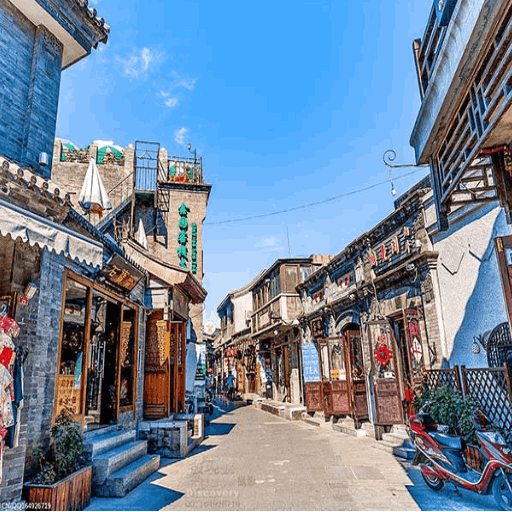
Hutongs: How Did They Start
Beijing Hutongs started in the Yuan Dynasty (1271–1368) In the past, Hutongs served as narrow passageways between residential siheyuan, or courtyards. Like many other hutongs, these narrow pathways were essential to the city’s design and planning during that period. Social customs and practices of the society at that time were guided by a rigid structure. During both the Ming (1368–1644) and Qing (1644–1912) Dynasties, the number of hutongs increased tremendously, parallel to the growth of local communities as they provided an interconnected network of traditional Chinese buildings and ways of life. Even today, these passages, which are of historical importance, serve as cultural symbols of Beijing, representing its history, architecture, and the lifestyle of its people in the past.
What Sets Apart The Hutongs in Beijing?
Beijing’s Hutongs are unique because of their complex geography, which comprises narrow passageways and courtyard dwellings, which is a fine example of Chinese urban planning. Such lanes were of utmost importance in establishing local communities where people could reside together across several generations. From an architectural point of view, Hutongs have a unique layout featuring siheyuan (courtyard houses) and other structures typical of local culture and aesthetics. Moreover, it is an exceptional place where ancient times are blended with modern times, which makes Beijing’s history as well as the culture even richer and fascinating. Unfortunately, these symbols of culture and history are overwhelmed with the power of industrialization.
Key Spots to Visit in Beijing Hutongs
1. Nanluoguxiang
One of the most well-known hutongs in Beijing, Nanluoguxiang, is a culturally rich and lively lane. It is famous for its ancient buildings from the Yuan dynasty and modern stores, cafes, and restaurants. Guests can partake in an energetic atmosphere while visiting the pleasant stores around the area and can walk through the narrow lanes.
2 .Dongjiaominxiang
At some point, this hutong was the longest in Beijing and is now a part of Dongjiaomin Circle. During the late Qing Dynasty, Dongjiaomin was incredibly significant for foreign diplomats, which made it crucial for Chinese history. This region boasts beautifully lined trees and colonial buildings built alongside conventional Chinese structures, making it a fantastic area for history lovers.
3. Yandai Xiejie
Shichahai and Houhai Lake are both close to the uniquely named Yandai Xiejie, which means “Tobacco Pipe Lean Street” in English. This place is famous for its traditional Beijing style stores and infamous for how the name came to be. Guests can walk around this beautiful alley and explore souvenir shops, teahouses, and street food only minutes away from both lakes.
How to Enjoy a Beijing Hutong Tour
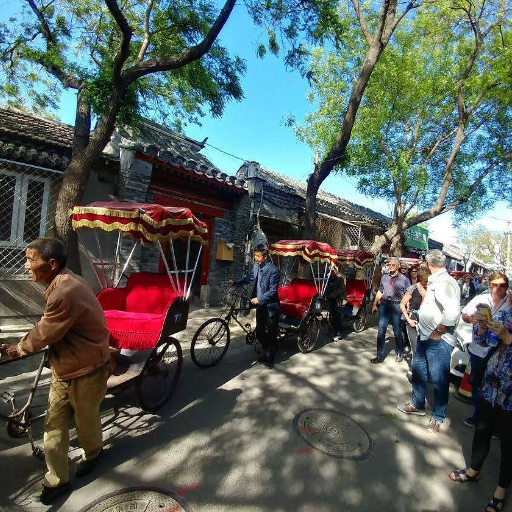
Guided vs Self-Guided Walking Tours of the Hutong
When deciding on guided or self-guided walking tours of the Hutong, each choice conveniently provides specific and unique merits according to one’s needs. Guided Hutong tours provide meticulous professional guides who narrate the history, relevant culture, and other subtle details that might otherwise be missed out on. In most instances, these tours include captivating narratives and predefined routes and objectives perfect for those wanting a deep comprehension of the Hutongs.
In contrast, self-guided walks allow Hutong strollers to explore at their convenience. Several maps available in stores, online, and other guides allow travelers to consolidate their preferred areas of interest, like cuisine, architecture, or even history, into one memorable trip. While they might lack informed stories and guides, those who proffer self-guided walks value their freedom and individuality. Again, this choice boils down to whether a traveler wishes to be told where to go or wishes to go wherever they feel like.
What to Consider During the Hutong Tour
Culture and local life are some of the most overt and fascinating aspects that can be perceived through hutong tours. Observing the architecture, and the lifestyle of the people provide an unparalleled immersion into what makes a place unique. Such tours normally entail visiting aged courtyard houses and angled roads from hundreds of years ago and understanding the place’s rich sociocultural and historical context. Many tours have arrangements for local shops, markets, or cafes Visitict to experience local life up close. Travelers can also see other key attractions like the Drum and Bell Towers or learn about some local crafts and traditions. Each tour is designed differently, but most offer options for walking or rides in a rickshaw, and many have commentary from a guide in smaller groups.
Best Times to Experience a Hutong Tour
The spring months between March and May and the autumn months of September to November are considered the best to partake in a Hutong tour. The moderate temperatures during the seasons make going outside pleasant and relaxing without the extreme heat of summer or the frigid cold of winter. Mornings and late afternoons are best to avoid busy tourist hours and enjoy the peaceful setting. Also, late afternoons give insight into the lively neighborhood as locals go about their day, while soft natural lighting early in the morning is the perfect setting for pictures.
What Are the Best Beijing Food Tours in the Hutongs?
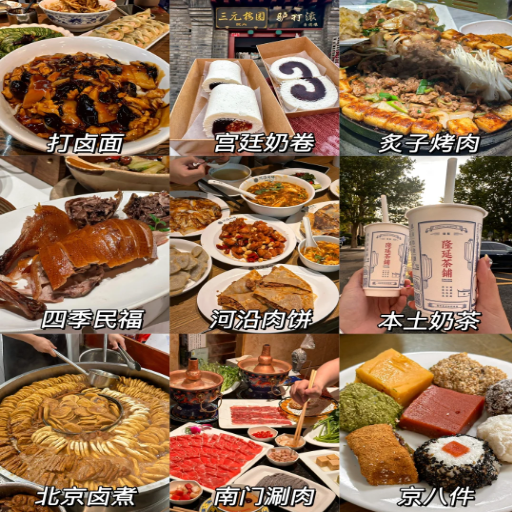
Best Local Dishes From the Hutongs That You Should Taste
The hutongs in Beijing are an absolute delight for food lovers. For starters, the most iconic dish is the Peking duck. This savory delicacy is famous for its crispy skin and juicy meat. It is usually served with pancakes, scallions, cucumber, and sweet bean sauce. Another must-have treat is Zhajiangmian. This dish consists of flavorful noodles topped with stir-fried minced pork and soybean paste with fresh diced cucumbers and radishes. Save some space for steamed dumplings (Baozi), a famous street food snack that are usually stuffed with juicy pork or vegetables. These treats symbolize not only the profound culinary culture of Beijing but also the lively, welcoming character of the hutongs.
Best Food Streets in the Hutong Areas of Beijing
As everyone knows, Beijing’s hutong areas are famous for their food streets. One is Wangfujing Snack Street, which has the most diverse selection of conventional and unusual street foods, such as scorpion on a stick and fruits dipped in syrup. Gui Jie, also known as Ghost Street, is another popular destination. It is best known for its vast amounts of Chinese food. After a long and tiring day, you can enjoy a delicious hot, spicy A-Nong Hot Pot. The hutong of Nanluoguxiang is perhaps the most famous one because of its historical significance; however, it does have a mix of modern-style restaurants that serve local delicacies like donkey meat burgers and delectable fusion food. All these streets tell a different story of Beijing culture, but they all speak about the city’s culinary diversity development.
How To Select The Right Beijing Food Tour
When choosing a Beijing food tour, based on your tastes and dietary needs, look for tours that offer authentic local experience. Guides and companies with good ratings for their knowledge and experience in Beijing cuisines will tour those “hidden gems.” For a personalized package, choosing smaller groups for tours is advisable. Look for food tours that include some of the busy night markets, traditional hutongs, and even modern food streets to experience the full variety of the city’s food. Remember to check if the places of interest e.g. authentic Peking duck or local delicacies, have been included in the package to enjoy an unforgettable culinary experience.
How to Navigate and Explore the Beijing Hutongs?
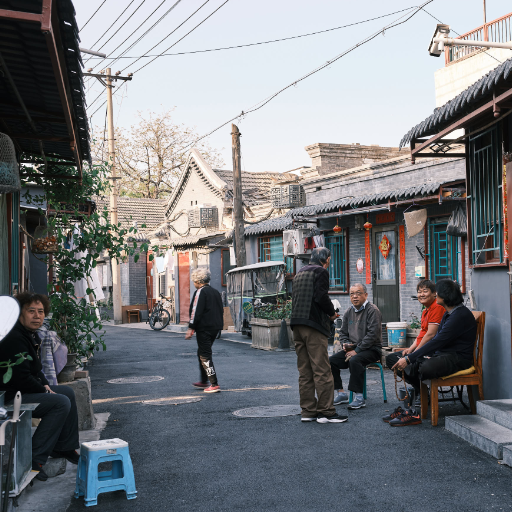
Forms of Transport: Bicycle, Rickshaw or Walk?
Hutong areas in Beijing can be explored according to your liking. For a more guided experience, one can take a rickshaw usually run by locals who give guided tours. Bicycles are more suited for active self-guided tours as they cover larger areas with great ease. Walking offers the closest interaction with the hutongs’ unique structures and everyday activities, though it tends to be the most time-consuming and physically tiresome mode of exploring the historic alleys.
Important Attractions to See: Drum Tower and Bell Tower
The Drum Tower and Bell Tower are prominent sites of cultural heritage in Beijing, built during the Yuan Dynasty. These towers, which are located within close proximity of each other in the Dongcheng District, served DCentralized authority Chinese cities as chief structures of recording time. The towers served specific purposes, as the drum garnered housed bigger drums, while the bell tower possessed a large bell that was used for the same purpose. Travelers can scale both towers to achieve impressive views of the surrounding hutongs and further understand the ancient timekeeping methods from the exhibits that elucidate their history and mechanical functions. They are, nevertheless, amazing examples of modern architecture and cultural emblems that showcase a snippet of history from China.
Advice for Adjusting to Old Hutongs
1. Plan your route in advance
Hutongs that are frequently visited because of their beauty and uniqueness as well as places of cultural importance like Nanluoguxiang or Yandaixie Street can be located online. You can choose routes that have an emphasis on historical and colonial buildings.
2 .Don’t go during peak times
If you went during the busy times of the day, you may find it hard to navigate around the narrow alleys. Therefore, try to go in the morning or on weekdays. Doing so lets you enjoy the calmness of the area and take perfect pictures.
3 .Interact with the Residents
Quite a few locals have stayed in these areas for ages and can talk in detail about the history and culture of the Hutongs. Be respectful, and you just might get special insights that no guidebooks provide.
4. Think About a Tour
It may be beneficial to participate in walking or biking tours in which local historians explain the context of the hutong, its architecture, and the rest of Beijing.
5 . Take Care of the Surroundings
Since the areas are residential, many people live in these quiet areas so remember to keep the noise levels down and don’t throw any trash. This keeps the beauty of this locality intact and also considers the residents.
What Cultural Experiences Can You Find in Beijing Hutongs?
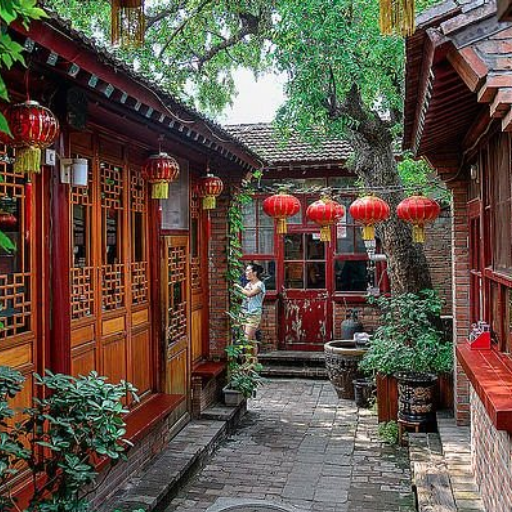
Locally Made Crafts and Workshops That Are Worth Visiting
To explore Beijing, a visit to the hutongs is a must since they allow you to learn different aspects of local crafts. For instance, you can take Chinese calligraphy classes, where a teacher proficient in the art of characters and strokes helps you learn the skill. One of the favorite workshops is kite-making, where students learn the art of making hand-painted kites, which is a traditional Chinese pastime. Also, many hutongs offer tea tasting sessions or even the whole tea ceremony, giving visitors a glimpse into this aspect of Chinese culture. In essence, these activities allow one to appreciate and understand the undeniable beauty and complexity of the culture and artisanship of Beijingers.
Encountering the Beijingers: Cultural Understanding
Interaction with the ‘Beijingers’, as they call themselves, unveils deep layers of the city, which is a perfect blend of modernization and historical conservatism. Interactions with people reveal an appreciation of their history, which is reflected through their emphasis on family, reverence for elders, and the observance of traditional celebrations like the Spring Festival. Beijingers love to tell stories about their life and nourishment which empowers visitors to understand the city’s rapid development and the preservation of its old buildings. Interfaces with the city, such as walking through morning markets, participating in public tai chi, or eating in local food places, provide insight into the real life of the Beijingers and their changing culture.
Popular Attractions: Prince Gong’s Mansion and Imperial Academy
As one of the last remaining families to structure their household as a traditional aristocratic family, the Gong family portrait from the early twentieth century is a testament to that. This enables viewing life during the Qing Dynasty. Prince Gong’s Mansion encapsulates everything luxurious during the Qing period. It is in Beijing, China, and has a serene sumptuous courtyard garden and elevated carvings and fully embodies the traditional Chinese royalty lifestyle. This sanctuary does not just capture monumental pieces of history but boasts an abundance of imperial relics and forms of classic Chinese opera.
Being among the last culture centers of Confucius during the Yuang, Ming, and Qing dynasties, exquisitely demonstrated the autobiography of a famous Chinese scholar is a known part of this historical landmark. His documented lessons repose within the classrooms and halls of Guozijian and narrate endless stories every visitor is welcome to view. The exquisite pillars of stone adrift with unparalleled wisdom and the preserved traditional hall symbolize reverence towards education and deep knowledge that all scholars cherished through the ages. Alongside the rather somber history, these intriguing temples paint an elaborate picture of Beijing’s culture.
Where to Stay Near the Beijing Hutongs?
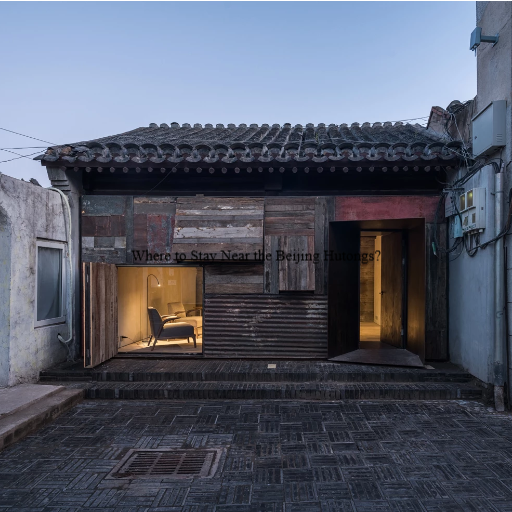
Recommended Hotels and Guest Houses
1. The Orchid Beijing
This boutique hotel is in the middle of the hutongs and offers modern amenities and traditional courtyard-style living. It provides elegant rooms with views of local cultural landmarks and a rooftop terrace, making it ideal for travelers looking for contemporary luxury blended with local charm.
2 .NUO Hotel Beijing
The NUO has modern, environmentally conscious architecture and excellent services near the hutongs. It offers spacious rooms and exquisite food and is close to many historical sites, so it is perfect if you want to pamper while being in the center of everything.
3. Courtyard 7
Courtyard 7 is set within a refurbished courtyard from the Qing Dynasty offering guests a blend of the old and new. This property is famous for its helpful staff, well-preserved traditional design, and proximity to the hustle and bustle of the hutongs.
Advantages of Staying Close to the Hutongs
Staying close to the hutongs provides maximum access to Beijing’s modern and historical heritage. These outdated pathways are local life centers, allowing visitors to see Beijing’s architecture and social heritage. Travelers can walk or ride bikes through the narrow streets and discover hidden courtyards, local restaurants, and small shops. The neighborhood also contains significant sites such as the Forbidden Palace or the Drum and Bell Towers, making it easy to tour essential places of interest while soaking in the atmosphere of old Beijing. In addition, there are many small hotels that offer traditional style and modern facilities around the hutongs which guarantee a memorable stay.
The Best Areas For Hutong Lodging
1. Dongcheng District
Besides the Forbidden City and Tiananmen Square, people fond of historic places also flock here for the Dongcheng District, which has a hutong. It is one of the most popular choices for travelers looking for hutong accommodation due to its well-known landmarks. Another well-noted area is Nanluoguxiang, which is also a hutong And is famous because of its trendy shops, cafes, and friendly local people.
2.X icheng District
Less famous but still boasting beautiful scenery is Xicheng District. In this part of the city you will find stunning areas such as Shichahai and the surroundings of the Drum and Bell Towers where you can enjoy the local delicacies and take in the stunning views from the lakeside. You can also enjoy quaint boutique lodgings that highlight the traditional courtyard designs. Xicheng also has less tourists which allows for a more traditional Beijing experience.
3.Gulou (Drum Tower) and Houhai Area
Xicheng and Dongcheng Districts are split by the Gulou and Hohai region, offering historical charm and a modern-day buzz. This area has stunning and vibrant nightlife and picturesque lakes and winding hutongs. It is highly recommended for those who are looking to immerse themselves in the local culture and enjoy modern-day comforts. There are also many guesthouses and boutique hotels in the area which provides the guests with an immersive experience by staying in traditional houses.
Reference sources
Frequently Asked Questions (FAQs)
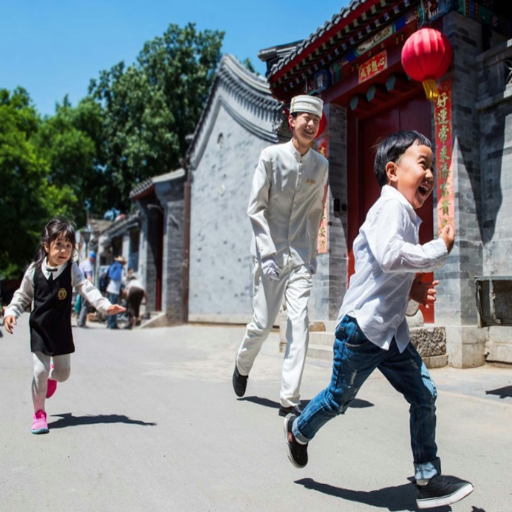
Q: What are hutongs in Beijing?
A: Hutongs are narrow alleys or lanes that are characteristic of Beijing’s historical architecture. They often consist of old courtyard homes known as quadrangles, providing a glimpse into the city’s rich cultural heritage.
Q: How can I explore hutongs in Beijing?
A: You can explore hutongs by walking, hiring a rickshaw, or joining a guided tour. Many tours also include visits to famous hutongs like Guozijian Street and Yinding Bridge to learn about the local culture.
Q: What is the significance of hutongs in the context of the Republic of China?
A: During the Republic of China, hutongs were significant as they represented communal living and traditional Chinese architecture, reflecting the socio-cultural dynamics of that era.
Q: Are there famous hutongs I should visit in Beijing?
A: Yes, many famous hutongs are worth visiting, including Shichahai Lake, Qianhai, and the well-preserved ones that date back to the Ming Dynasty, allowing visitors to learn more about old Beijing.
Q: How do hutongs reflect the local culture of Beijing?
A: Hutongs reflect local culture through their architecture, community lifestyle, and history. Visiting a local hutong can offer insights into the way of life in the city of Beijing, especially in quiet or hundred years old areas.
Q: What can I expect to see in the hutongs of Beijing?
A: In the hutongs, you can see traditional courtyard homes, local shops, street food vendors, and often small temples, such as the Bell and Drum Tower. Each hutong tells a story about the history of the area.
Q: How did the names of hutongs originate?
A: Hutongs were named based on various factors, including geographical features, historical events, or prominent families that once lived there. Many hutongs listed in the Qing Dynasty have retained their names throughout the years.
Q: What is the best time to visit hutongs in Beijing?
A: The best time to visit hutongs in Beijing is during spring or autumn when the weather is mild. This is ideal for walking tours where you can enjoy the local scenery and vibrant atmosphere.
Q: Can I combine my hutong tour with other famous Beijing sites?
A: Absolutely! Many tours offer the chance to combine a hutong experience with visits to famous Beijing landmarks such as the Summer Palace, Temple of Heaven, and the Great Wall, enhancing your overall understanding of Beijing.